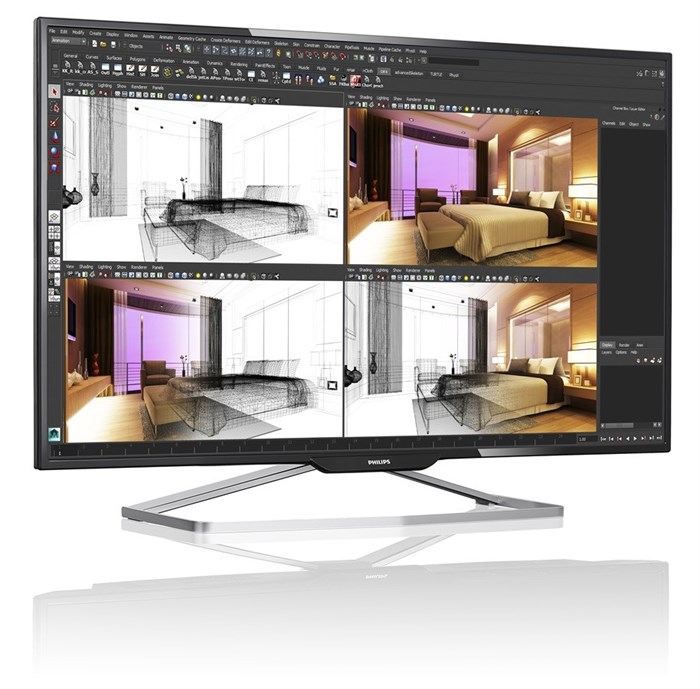
Ultra High Definition (UHD) displays, also known as 4K displays, offer screen resolution of 2160 pixels by 3840 pixels. This is four times the resolution of a standard 720 pixel by 1280 pixel HD monitor, which in turn translates into much higher clarity of images and extreme levels of detail never before seen in a computer display.
Utilising white solid-state LEDs, 4K monitors enable better dimming control, resulting in a super high contrast ratio, and deliver superior colour reproduction with consistent brightness across the screen. Higher contrast and dynamic image configuration ensure optimal viewing in any conditions. Details are clearer, text is sharper, colours are more true to life, and image quality is more impressive than ever. A wider viewing angle of up to 176 degrees allows images on screen to be viewed accurately from anywhere in a room, and innovative technology even enables users to connect multiple devices side by side to a single monitor for advanced multitasking capability.
This lends 4K monitors perfectly to a wide range of different applications. At home, users can stream movies and view and edit photographs with more clarity and detail than ever. For gamers, these monitors provide a truly immersive experience, allowing the user to get deeper into the world of their games for enhanced play. Numerous connectivity options including USB 3.0, HDMI, VGA and DisplayPort make it easy for users to connect a host of peripherals, including set top boxes and Blu-ray players, for ultimate streaming and centralised media access.
In addition, Mobile High-Definition Link (MHL), a mobile audio/video interface for directly connecting mobile phones and other portable devices to high-definition displays, offers connectivity for the mobile world. With an optional MHL cable, users can connect MHL-capable devices to the display in seconds for UHD content sharing and simultaneous device charging.
For professional photographers and videographers, more detail is available for more accurate and seamless editing and viewing. In the business space, 4K monitors can help to improve productivity, with more screen space for key applications like spreadsheets and the ability to maintain multiple open windows on the same screen without losing detail and clarity. Specialised applications like scientific imaging can benefit from uncompromising clarity and the ability to view in granular detail, while Computer Aided Design (CAD) can leverage more space, more detail and improved responsiveness and multitasking ability.
In addition to lending itself to multiple applications, 4K monitor technology is also better for the environment and for users themselves. LEDs are free from mercury, making the displays more eco-friendly to manufacture and dispose of. Consistent images displays without screen flicker are better for the eyes, and additional screen space lets users zoom their displays to a level that is comfortable for their individual eyesight. With UHD set to become the next standard in broadcasting and display technology, 4K monitors allow users to benefit now while preparing for the future and protecting their investment.
